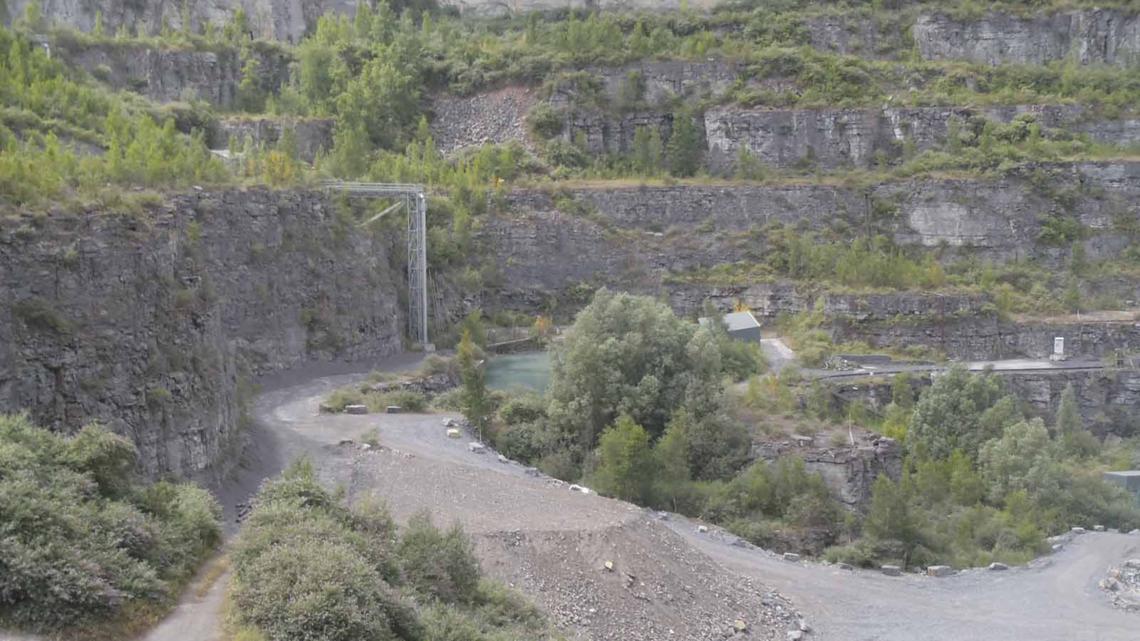The issue / context
In the Antoing area (Belgium), local quarry operators have to pump and extract underground water for their activities. Part of the extraction water is used in aggregates plants for dedusting purposes and the rest was usually discharged to the local Escaut river. This practice led to wasting water and inefficient management thereof, especially considering the scarcity of the natural resource in the area. This has been the driving force for encouraging the different aggregates producers of the Antoing Area to find solutions for more efficient water management and stewardship.
In the same area, the public water company Société Wallonne de Distribution des Eaux (SWDE), exploits underground water to provide drinking water to the local community.
Prior to the agreement between the quarry operators and SWDE, the Antoing quarry discharged extraction water directly to the local Escaut river. Now, water is instead supplied to SWDE.
Objective and project overview
This project aimed to reduce underground water over-exploitation because SWDE now receives water from quarry operators and no longer needs to pump underground water by its own means. Moreover, the project aimed at optimizing water use, water being a natural resource used in the quarry to be able to mine aggregates.
The quarry operators established contact with SWDE to assess the volume of underground water available and to conduct a feasibililty study with regards to recovery of discharged water.
The partnership with SWDE constitutes a mutually and socially beneficial relationship. Aggregates producers are able to value a natural resource that normally needs to be discharged. Likewise, SWDE is being supplied with water that it can treat and subsequently supply to local communities as drinking water.
The business case
Water resources extracted for the company’s activities were not managed efficiently. Indeed, part of the water extracted was not being used and directly discharged to the local Escaut river. Therefore, the idea of partnering with SWDE and supplying them with water initially intended for discharge made sense from both an environmental and economic perspective. The agreement provides a sensible way of discharging water and likewise provides SWDE with water to supply the local communities, ultimately resulting in a benefit for society and communities through water stewardship efforts.
Decision making process
The agreement with SWDE was concluded before the Antoing quarry had been acquired by HeidelbergCement. The project was deemed as a valuable win-win project and henceforth continued.
Project details & finances
In 1998, an agreement between Antoing quarry (at this time “Carrières d’Antoing s.a.”) and the public water company SWDE was concluded.
To be able to treat the discharge water, SWDE constructed an installation in Gaurain-Ramecroix (5km from the Antoing quarry). A new pipe network directly leads water from the quarry to the SWDE treatment site, where it is converted into potable water for the surrounding local communities. About 95% of the discharged water is supplied to SWDE in this way.
Project results
This project is an example of a water management best practice in the aggregates/quarrying sector, which was received very positively in the area. This new way of contributing to sustainable development, and sustainable water management in particular, is an approach that HeidelbergCementGroup, through Sagrex, develops in its quarries.
This mutually beneficial project on water optimization benefits society, improves the company’s license to operate and facilitates discussion with other stakeholders, especially the authorities when it comes to permitting procedures. As a result of the positive outcome of the project, Sagrex has developed a similar partnership in Belgium with a quarry in Lemay (next to Antoing) which has likewise led to positive project results.
Lessons learned
Some key lessons learned have been:
- Sustainable water management combines economic, environmental and social concerns. Assessing the entire supply and value chain as well as developing water monitoring programs helps identify opportunities for more efficient resource use at all levels of the discharge and supply phases. It is important to see business operations not in isolation but as part of a system, where operations have the potential to create positive externalities to the community.
- The water optimization project at Antoing benefits both the company and the community around. Engagement with local stakeholders is crucial not only to secure a (social) license to operate but also in order to ensure responsible and sustainable resource use. While the local community needs potable water, the aggregates quarry needs water for its operations. The implementation of a circular solution that is environmentally and economically efficient has enabled meeting the dual objective of responding to the local community needs and enhancing water use fo the company operations.
Future implementation and next steps
Based on the positive experience, an agreement with a public water company is foreseen at Tellier quarry.
Download case study
References
- European Aggregates Association (UEPG). Water Management Case Study, [online] Available at http://www.uepg.eu/uploads/Modules/CaseStudies/water-management-case-study---belgium2.pdf
This case study forms part of the WBCSD Business Guide to Circular Water Management (2017), available for download here.
Project detailsCompany: HeidelbergCement - CIMENTERIES CBR Country: Belgium Business Sector: Aggregates Author(s): Virginie Maeck, Nora Lambrecht Contact information: virginie.maeck@sagrex.be, nora.lambrecht@heidelbergcement.com |


